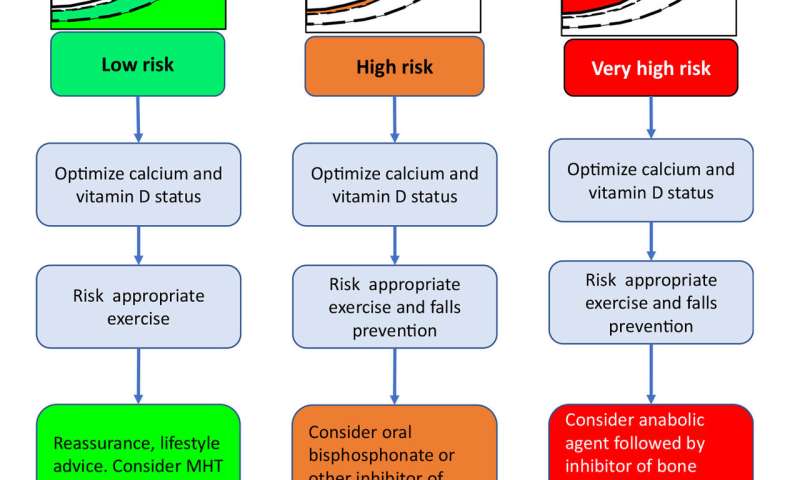New position paper offers practical guidance for osteoporosis management

In 2018 the International Osteoporosis Foundation (IOF) and European Society for Clinical and Economic Aspects of Osteoporosis and Osteoarthritis (ESCEO) published the updated European guidance for the diagnosis and management of osteoporosis in postmenopausal women. Now, the newly published position paper, "Algorithm for the management of patients at low, high and very high risk of osteoporotic fractures" summarizes the guidance in an international setting, with a focus on the categorisation of risk as a strategy to target therapeutic interventions.
05 dec 2019--The publication reflects the outcomes of a consensus meeting organized by ESCEO and IOF, involving experts from 17 countries. It includes easy-to-use algorithms which illustrate possible decision pathways for the management of postmenopausal osteoporosis, based on the absolute risk of fracture (FRAX) and an assessment strategy permitting the classification of low, high and very high risk of osteoporotic fractures.
Professor John A. Kanis, lead author and IOF honorary president, stated:
"Fractures related to osteoporosis are a major cause of morbidity and early mortality. We now know that the risk of a subsequent fracture is acute immediately after a first fracture. This clearly points to the need for early intervention for secondary fracture prevention, and to the use of agents that have the most rapid effect on fracture reduction in patients at very high risk."
The rationale for the more refined characterisation of risk is to offer the most appropriate interventions to the patient. For example, initial treatment recommendations for women at high risk might most suitably be with an inhibitor of bone resorption. In contrast, women at very high risk (or 'imminent risk' of fracture) might be more suitably treated with an anabolic treatment followed thereafter by an inhibitor of bone resorption.
Professor Jean-Yves Reginster, ESCEO president and co-author, added: "The publication addresses the need for succinct guidance that will help clinicians identify and treat women at the very highest risk as early as possible. As well, it is intended as a platform on which specific national guidelines can be developed to characterise fracture risk and direct interventions."
More information: J. A. Kanis et al, Algorithm for the management of patients at low, high and very high risk of osteoporotic fractures, Osteoporosis International (2019). DOI: 10.1007/s00198-019-05176-3
European guidance for the diagnosis and management of osteoporosis in postmenopausal women, Osteoporosis International (2018). DOI: 10.1007/s00198-018-4704-5
Executive summary of the European guidance for the diagnosis and management of osteoporosis in postmenopausal women, Calcified Tissue International (2019). DOI: 10.1007/s00223-018-00512-x
Provided by International Osteoporosis Foundation
No comments:
Post a Comment